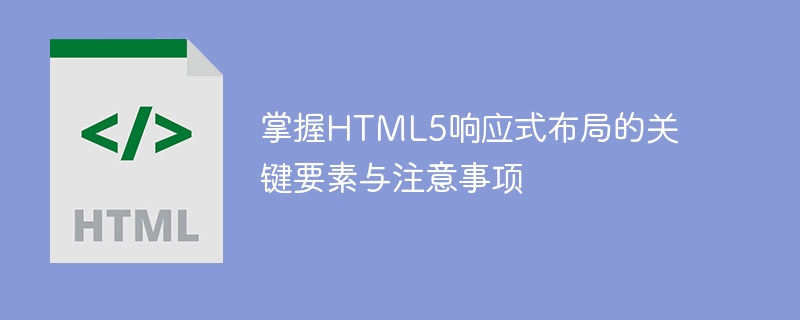

To master the key elements and precautions of HTML5 responsive layout, specific code examples are required
With the popularity of mobile Internet, users have more and more ways to access web pages. diversification. In order to provide a better user experience, responsive layout came into being. HTML5 responsive layout is a method that allows web pages to adapt to different screen sizes and devices, allowing web pages to be displayed perfectly on different devices such as computers, tablets, and mobile phones.
To master the key elements and precautions of HTML5 responsive layout, you first need to understand the following aspects:
@media screen and (max-width: 767px) {
/* 在此处定义适应小屏幕的样式 */
}<flexbox> element is introduced in the new features of HTML5, which can quickly create a flexible grid layout. The following is a simple code example: <div class="flex-container"> <div class="flex-item">第一个项目</div> <div class="flex-item">第二个项目</div> <div class="flex-item">第三个项目</div> </div>
.flex-container {
display: flex;
flex-wrap: wrap;
}
.flex-item {
width: 33.33%;
}In this example, the .flex-container class is applied to a container containing three sub-items (.flex-item ) container, the width of the sub-item is set to 1/3, so that it can automatically adapt to both large and small screens.
<picture> element and the srcset attribute to implement this function. The following is a code example: <picture> <source srcset="image_small.jpg" media="(max-width: 600px)"> <source srcset="image_medium.jpg" media="(max-width: 1200px)"> <source srcset="image_large.jpg" media="(min-width: 1201px)"> <img src="image_default.jpg" alt="默认图片"> </picture>
In this example, depending on the screen width, the <picture> element will automatically select the appropriate picture for display.
It should be noted that there are some things to pay attention to when using responsive layout:
max-width property. To sum up, after mastering the key elements and precautions of HTML5 responsive layout, we can use technologies such as media queries, elastic grid layout, and image adaptation to create a product that perfectly adapts to different devices. web page. At the same time, mobile-first design, scalable layout, and progressive enhancement principles can help us provide a better user experience.
(The above code examples are only for demonstration, please adjust according to your needs in actual application.)
The above is the detailed content of Important elements and precautions for HTML5 responsive layout. For more information, please follow other related articles on the PHP Chinese website!